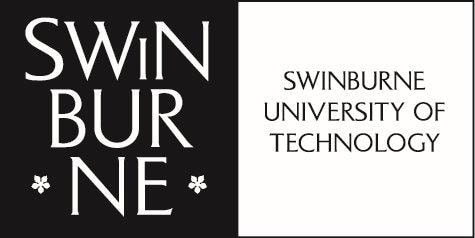Pioneering astrophysicist and OzGrav Director Professor Matthew Bailes has been recognised for his outstanding contributions to science by being elected a Fellow of the Australian Academy of Science. Professor Bailes has specialised in the study of pulsars, fast radio bursts and gravitation, making major contributions to establishing Australia’s high international profile in these areas. In particular, he has played a pivotal role in the development of a new branch of astrophysics, Fast Radio Bursts, developing pioneering instrumentation and software that led to Australia’s early dominance of the field. Professor Bailes has been central in putting Swinburne University of Technology at the cutting-edge of astrophysics. Centre for Astrophysics and Supercomputing In 1998 he established Swinburne’s Centre for Astrophysics and Supercomputing, recognised internationally as a centre for astrophysics and virtual-reality content for public outreach. The centre hosts one of Australia’s most powerful supercomputers and has developed 3D virtual reality films for its custom 3D theatres and IMAX. The centre has graduated over 100 PhDs and pioneered online education via Swinburne Astronomy Online, but also worked with many school children for work experience and virtual tours of the Universe in their custom 3D theatre. ARC Centre for Excellence for Gravitational Wave Discovery (OzGrav) In 2016 Professor Bailes was appointed the Director of the Australian Research Council Centre for Excellence for Gravitational Wave Discovery (OzGrav). Hosted at Swinburne OzGrav is a worldwide collaboration that aims to understand the extreme physics of black holes and warped space time. Professor Bailes was named among 22 outstanding researchers from across the breadth of Australian science as a Fellow of the Academy. Upon hearing the news of his election Professor Bailes said: “I’ve always had a burning desire to understand how the Universe works and want to thank my mentors, staff, collaborators and students for enabling the discoveries I’ve been involved with.” He nominated the discovery of the Fast Radio Bursts as his career highlight. “I couldn't sleep the night after the first one was discovered because it seemed too good to be true! Fortunately, it was true.” Incoming President of the Australian Academy of Science Professor Chennupati Jagadish AC, congratulated the new Fellows for their contributions to science. “Fellows of the Australian Academy of Science are among the nation’s most distinguished scientists, elected by their peers for ground-breaking research and contributions that have had clear impact,” Professor Jagadish says. “We reflect a diverse and inclusive science community that recognises the widest range of talents, backgrounds, perspectives and experiences, and we are united by our contribution and commitment to scientific excellence.” This article is an amended version of the media release originally publish on Swinburne University’s website.
1 Comment
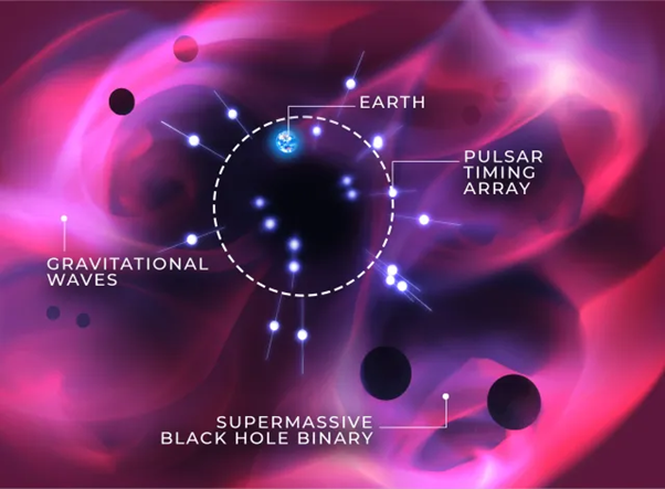 Image by Carl Knox, OzGrav-Swinburne University Image by Carl Knox, OzGrav-Swinburne University At the centre of most galaxies there is a massive black hole. These black holes are very heavy – their mass can be from a million to over a billion times the mass of the Sun and, as such, are appropriately known as supermassive black holes. As galaxies move around in the Universe, they will sometimes merge. When this happens, the supermassive black holes they host tend to migrate toward each other and form a binary system. As these two black holes orbit each other, they warp the fabric of space and time around them and produce gravitational waves which ripple out into the Universe. These gravitational waves complete one full oscillation every year or so as they travel through space and are classified as low frequency gravitational waves. The Universe is full of these supermassive black hole binary systems, and the gravitational waves they emit fill space, combining to form something known as the stochastic gravitational wave background. Scientists are trying to find a gravitational wave signal from this background using a complex network of radio telescopes called a pulsar timing array but it could be years before there is a confirmed detection. For this reason, cosmological simulations are often used to predict what this gravitational wave signal could look like. This type of simulation helps scientists understand the structure and history of the Universe by tracking the flow of matter and energy from a time soon after the Big Bang, up until today. A team of researchers led by postgraduate researcher Bailey Sykes (from Monash University), alongside several OzGrav scientists, including OzGrav Associate Investigator Dr Hannah Middleton, have recently made a new prediction for the strength of this gravitational wave signal. The new estimate is based on data from the MassiveBlack-II simulation, which simulates a massive region of space similar to a chunk of our own Universe. The team made two estimates: one in which the supermassive black holes merge almost instantly once their host galaxies collide, and another in which the two black holes take time to sink towards each other once they pair up in a binary system. This second estimate is important as the gravitational wave output of a binary can change during this time due to the interactions of stars and gas nearby the supermassive binary. The simulated gravitational wave signal using MassiveBlack-II is similar to other predictions in previous studies. It’s smaller than a signal currently detectable by pulsar timing arrays; however, as the sensitivity of telescope technology increases over time, it’s possible a confirmed detection could be just around the corner. The results from the study add valuable insights to existing signal predictions and provide an important reference point for future pulsar timing arrays. Progressively more accurate estimates of the stochastic gravitational wave background can be used to further understand other astrophysical phenomena, including the interactions of stars and gas which impact merging supermassive black holes. Written by Bailey Sykes (Monash University) Australian researchers shape the future of photonic sensing with spin-off company Vai Photonics24/5/2022 In 2021, Australian researchers Lyle Roberts and James Spollard, from The Australian National University (ANU), co-founded Vai Photonics: a spin-off company developing patented photonic sensors for precision navigation. The ARC Centres of Excellence for Engineered Quantum Systems (EQUS) and Gravitational Wave Discovery (OzGrav) played key roles in kickstarting Vai Photonics by providing seed funding towards fundamental LiDAR research, which translated to real-world, industry applications. Now, Advanced Navigation, one of the world’s most ambitious innovators in AI robotics and navigation technology, has announced the acquisition of Vai Photonics with aims to commercialise Roberts and Spollard’s research into exciting autonomous and robotic applications across land, air, sea and space. “The technology Vai Photonics is developing will be of huge importance to the emerging autonomy revolution. The synergies, shared vision and collaborative potential we see between Vai Photonics and Advanced Navigation will enable us to be at the absolute forefront of robotic and autonomy-driven technologies,” said Xavier Orr, CEO and co-founder of Advanced Navigation. Vai Photonics co-founder James Spollard explained: “Precision navigation when GPS is unavailable or unreliable is a major challenge in the development of autonomous systems. Our emerging photonic sensing technology will enable positioning and navigation that is orders of magnitude more stable and precise than existing solutions in these environments. “By combining laser interferometry and electro-optics with advanced signal processing algorithms and real-time software, we can measure how fast a vehicle is moving in three dimensions,” said Spollard. “As a result, we can accurately measure how the vehicle is moving through the environment, and from this infer where the vehicle is located with great precision.” The technology, which has been in development for over 15 years at ANU, will solve complex autonomy challenges across aerospace, automotive, weather and space exploration, as well as railways and logistics. EQUS Director Professor Andrew White applauded the initiative and determination shown by Lyle and James. “Lyle and James are perfect examples of researchers achieving useful outcomes by utilising the funds, mentoring, and guidance available through EQUS’s Translation Research Program, to help pursue the real-world impacts that our research can deliver. These two are what Australia’s research future looks like,” said White. OzGrav Director Professor Matthew Bailes said he was thrilled to see such a positive outcome for our early career researchers that were supported by OzGrav's industry seeding scheme and workshops. "It reinforces the fact that pushing the limits of instrumentation for scientific purposes can often create opportunities for Australian innovators and industry," said Bailes. Professor Brian Schmidt, Vice-Chancellor of the Australian National University said: “Vai Photonics is another great ANU example of how you take fundamental research – the type of thinking that pushes the boundaries of what we know – and turn it into products and technologies that power our lives. “The work that underpins Vai Photonics’ advanced autonomous navigation systems stems from the search for elusive gravitational waves – ripples in space and time caused by massive cosmic events like black holes colliding. “The team have built on a decade of research and development across advanced and ultra-precise laser measurements, digital signals and quantum optics to build their innovative navigation technology. We are proud to have backed Vai Photonics through our Centre for Gravitational Astrophysics and business and commercialisation office. It’s really exciting to see the team take another major step in their incredible journey.” Co-founder Dr Lyle Roberts looks forward to an autonomous future: “This is a huge win for the Vai Photonics team – together with Advanced Navigation we are able to bring our product to market much faster than originally planned. We now have access to leading research and development facilities along with strong distribution channels. We couldn’t have asked for a better outcome and look forward to navigating the future with Advanced Navigation.” This acquisition fits into Advanced Navigation’s larger growth strategy to expand its product and solutions portfolio across deep technology fields that look to solve the world’s greatest challenges facing the autonomy revolution. The acquisition was finalised in April 2022, subject to typical closing conditions. The Vai Photonics team has been integrated into Advanced Navigation’s research and development team, based out of the new Canberra research facility. This article is an amended extract from the original article written by Laura Hayward published on www.advancednavigation.com Research highlight: Deep Follow-up of GW151226 - an ordinary binary or a low-mass ratio merger?17/5/2022 Now that we've been detecting gravitational waves (GWs), we'd like to better understand the systems that generate GWs. The GWs found so far have been from collisions of celestial bodies, like black holes and neutron stars. Once we have detected a GW, we use "Bayesian Inference" to deduce the masses and spins of the objects that shot off the GW (to understand inference, check this video by 3blue1brown). Then we can use our mass and spin deductions to answer: where do these bodies exist in the Universe? Are these colliding bodies huddled together in galaxies or isolated in space? But, it gets tricky to answer such questions if our deductions of the masses and spins are incorrect! So, in my recent study, I have built a "deep follow-up" tool to determine which masses and spins better describe a given GW event. I have used this deep follow-up tool to study the "boxing-day" gravitational wave, GW151226. Initial work deduced that this GW was from the merger of two black holes (BHs), both with standard masses and spins (case A). However, recent work has deduced that the GW might have originated from a strange system: one BH could be much larger than the other and with a faster spin (case B)! A diagram representing these cases can be seen below on the right side of Figure 1. 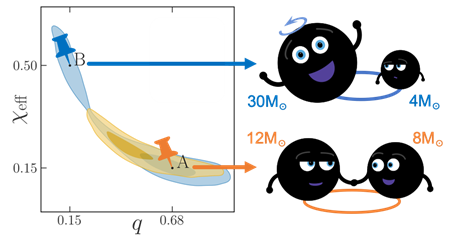 Figure 1: GW151226's two personalities. (Left) The initial and new Bayesian inference results are plotted in orange and blue, respectively. We perform a deep follow-up on the pinned points, cases A and B. (Right) Illustrative versions of what cases A and B represent. Note: black hole cartoons inspired by NASA’s Field guide to black holes. The "deep follow-up" method involves drilling into these cases to determine which binary BH system better describes the GW. First, we pin down some deduced properties of the merging black hole system, such as the mass-ratio q (the ratio of smaller BH mass divided by the bigger BH mass) and xeff (the effective spin of the binary in the z-direction). The pinned value for the initial and new results is on the left side of Figure 1. We then use Bayesian inference at these pinned values. The output allows us to compare case A and case B. We find that both the standard (case A) and irregular (case B) black hole pairs can describe GW151226, giving the event something like a dual-identity! This dual-identity gives GW151226 much more character than initially considered. For example, we initially believed that GW151226 came from an isolated black hole pair. However, a BH pair from case B is more likely to be found at the centre of an active galaxy! So, finally, I wonder: are there other GW events with split personalities? Hopefully, our deep follow-up method will be able to settle these questions. Written by OzGrav researcher Avi Vajpeyi, Monash University. Research highlight: Do massive-star models from various simulations give the same predictions?17/5/2022 Less than one percent of stars in a galaxy are formed with masses exceeding ten solar masses. Despite their rarity, massive stars are believed to play a crucial role in shaping their surroundings, ultimately determining the evolution of the star cluster or galaxy they are located in. Simulations of massive stars are used in many fields of astrophysics, from predicting gravitational-wave event rates to studying star formation and star cluster evolution. However, their rarity and short lives, along with their more extreme properties, mean that the evolution of massive stars is riddled with many uncertainties. These uncertainties are compounded by the fact that accurate modeling of stellar lives in three dimensions is prohibitively expensive in terms of computing resources. Therefore, stellar evolution is modeled using one-dimensional (1D) codes, with only radius or mass as the spatial coordinate. Three-dimensional (3D) processes such as rotation and mixing are approximated using 1D analogs, which generally give good results for most stars. However, in the envelopes of massive stars (and in low-mass stars at the late stages of evolution), the use of these 1D analogs can lead to numerical challenges for stellar evolution codes. The time steps of the computation become very small (of the order of days) and 1D codes struggle to compute the further evolution of the star. While researchers are trying to find the solution using multidimensional models, 1D stellar evolution codes adopt different pragmatic methods to push the evolution of stars beyond these numerical challenges. These methods, along with other uncertain parameters in the evolution of massive stars, can significantly alter the predictions of massive stellar models. To get an idea of how different their predictions can be, we examined models of massive stars from five different datasets, each computed using a different 1D code. We found that certain aspects of these predictions were extremely sensitive to the modeling assumptions employed by different codes. For example, in Figure 2, the different sets of massive star models show a variation of about 20 solar masses in their predictions of the mass of the black hole formed. We also found huge differences in the radial evolution of these stellar models and thus the ionizing radiation produced by them. These differences can directly affect binary evolution and the simulations of stellar environments, such as galaxies. Lasers support certain structures of light called ‘eigenmodes’. An international collaboration of gravitational wave, metasurface and photonics experts have pioneered a new method to measure the amount of these eigenmodes with unprecedented sensitivity. In gravitational wave detectors, several pairs of mirrors are used to increase the amount of laser light stored along the massive arms of the detector. However, each of these pairs has small distortions that scatters light away from the perfect shape of the laser beam. This scattering can cause excess noise in the detector, limiting sensitivity and taking the detector offline. From the recently submitted study, Prof Freise (from Vrije Universiteit Amsterdam) says: “Gravitational wave detectors like LIGO, Virgo and KAGRA store enormous amount of optical power – in this work, we wanted to test an idea that would let us zoom in on the laser beam and look for the small wiggles in power that can limit the detectors’ sensitivity.”Lasers support certain structures of light called ‘eigenmodes’. An international collaboration of gravitational wave, metasurface and photonics experts have pioneered a new method to measure the amount of these eigenmodes with unprecedented sensitivity. A similar problem is encountered in the telecoms industry where scientists want to use multiple eigenmodes to transport more data down optical fibres. OzGrav researcher and lead author Dr Aaron Jones (The University of Western Australia) explains: “Telecoms scientists have developed a way to measure the eigenmodes using a simple apparatus, but it’s not sensitive enough for our purposes. We had the idea to use a metasurface and reached out to collaborators who could help us fabricate one.” In the study, the proof-of-concept setup the team developed was over 1000x more sensitive than the original way developed by the telecoms scientists. The researchers will now look to translate this work into gravitational wave detectors, where the additional precision will be used to probe the interiors of neutron stars and test fundamental limits of general relativity. OzGrav Chief Investigator, Prof Zhao (from University of Western Australia) says: “Solving the mode sensing problem in future gravitational wave detectors is essential, if we are to understand the insides of neutron stars.” Written by Dr Aaron Jones (The University of Western Australia). |
|
- Home
- About
-
Our People
- Chief Investigators
- Partner Investigators
- Associate Investigators
- Postdocs and Students >
- Professional & Outreach staff
- Governance Advisory Committee
- Scientific Advisory Committee
- Executive Committee
- Equity & Diversity Committee
- Early Career Researcher Committee
- Professional Development Committee
- Research Translation Committee
- OzGrav Alumni
- Research Themes
- Education and Outreach
- Events
- News/Media
- Contact Us
- Home
- About
-
Our People
- Chief Investigators
- Partner Investigators
- Associate Investigators
- Postdocs and Students >
- Professional & Outreach staff
- Governance Advisory Committee
- Scientific Advisory Committee
- Executive Committee
- Equity & Diversity Committee
- Early Career Researcher Committee
- Professional Development Committee
- Research Translation Committee
- OzGrav Alumni
- Research Themes
- Education and Outreach
- Events
- News/Media
- Contact Us


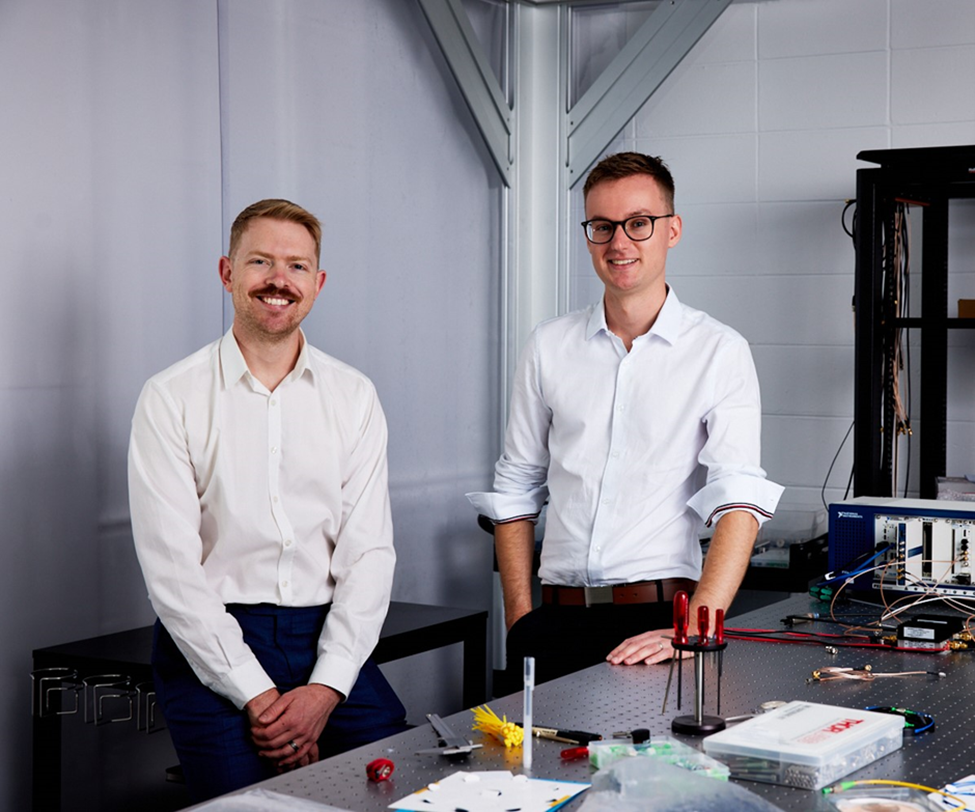
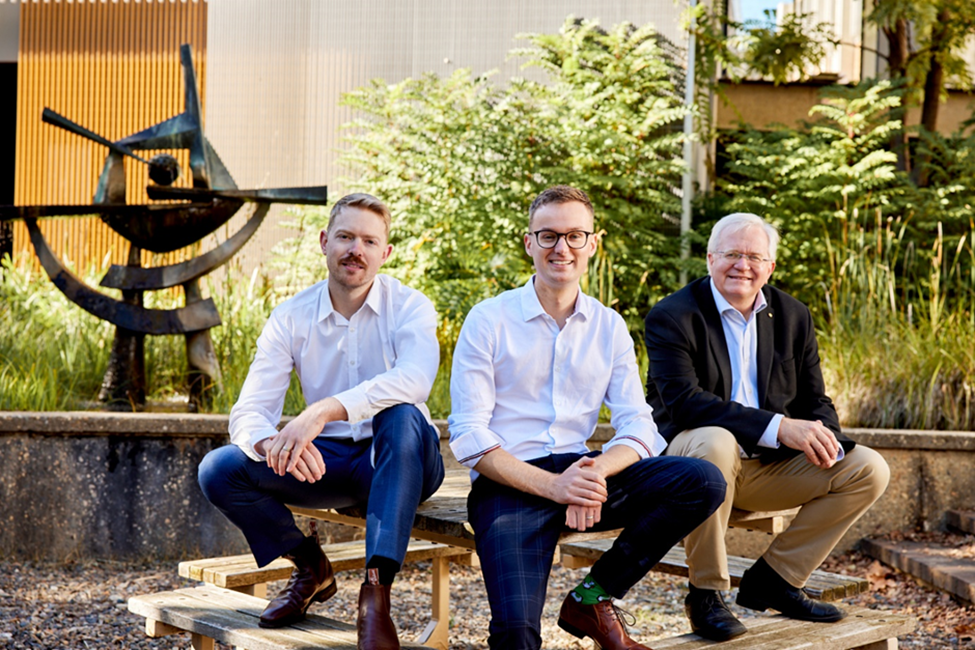
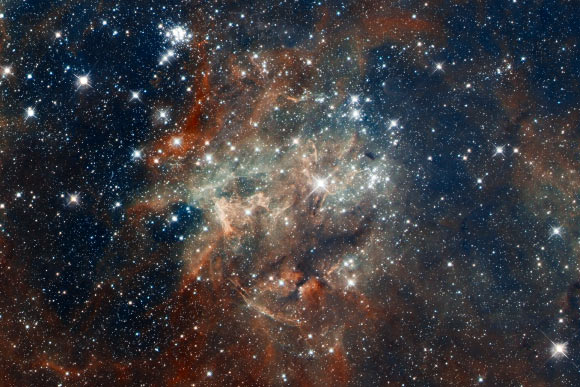
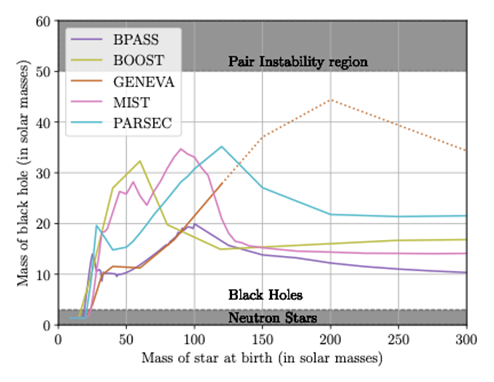
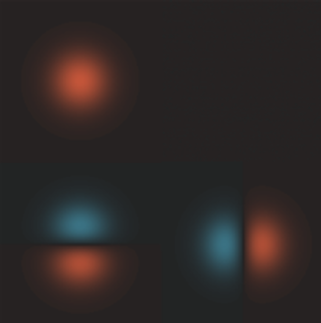
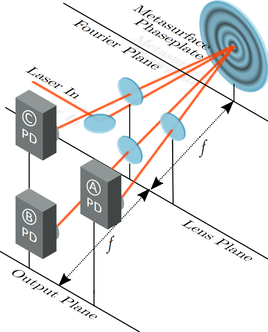
 RSS Feed
RSS Feed


